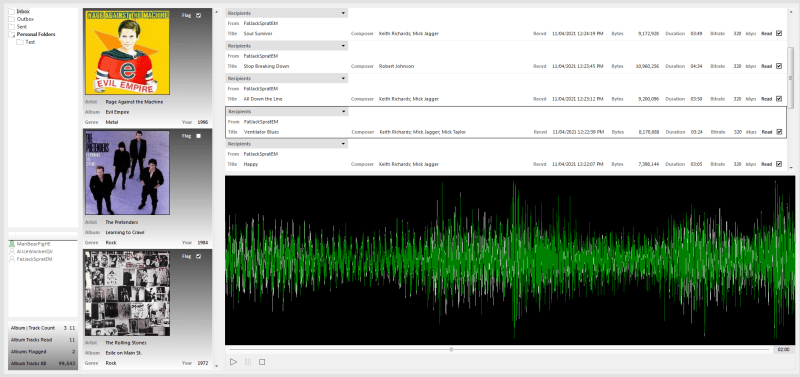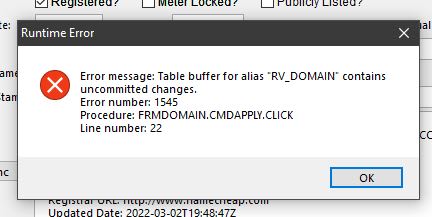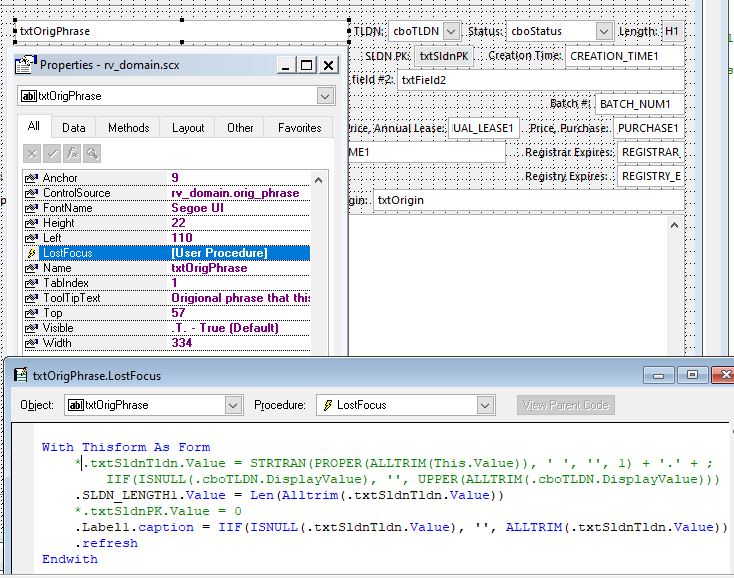Hi,
Using remote views, what does the syntax look like to convert "set filters" to something more for remote views and how are they tied to the form's datasource?
This code is in a combobox where the user selects what is to be shown.
Thanks, Stanley
Using remote views, what does the syntax look like to convert "set filters" to something more for remote views and how are they tied to the form's datasource?
This code is in a combobox where the user selects what is to be shown.
Code:
Case This.DisplayValue = 'Available'
Set Filter To rv_list.registered <> 1
Go Top
Case This.DisplayValue = 'MeterLocked'
Set Filter To rv_list.meterlocked = 1
Go Top
Case This.DisplayValue = 'Publicly List'
Set Filter To rv_list.publicly_list = 1
Go TopThanks, Stanley



